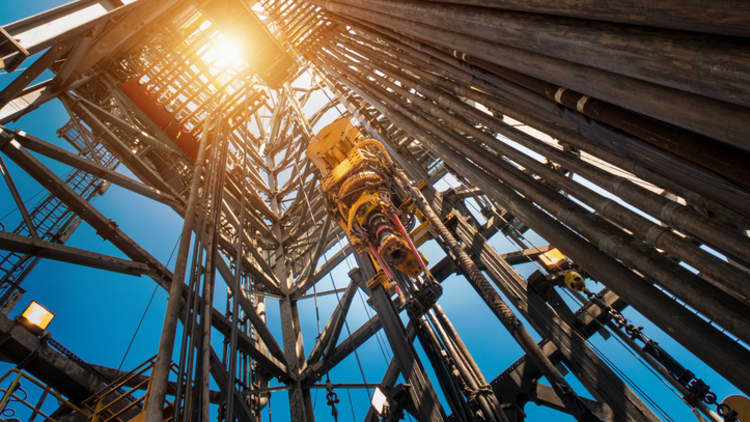The summer driving season will end much like it began, with American motorists paying the highest price at the gasoline pump in four years.
Gas prices have barely budged this summer, with the national average for regular gasoline hovering around $2.85 a gallon since mid-June. That's down slightly from a high of nearly $3 at the end of May, but it's still about 43 cents a gallon more than drivers paid at this time last year.
Analysts warn that Americans shouldn't expect much relief beyond Labor Day.
"I'm expecting towards the latter half of September gasoline prices will come off 10 cents a gallon," said Andrew Lipow, president of Lipow Oil Associates. "I think that they will be a little bit more elevated than in previous years."
Analyst say that's largely due to looming U.S. sanctions on Iran, the world's fifth-biggest oil producer. The Trump administration is pressuring oil buyers to stop importing crude from Iran by November, right around the time gasoline costs usually fall. The prospect of losing the Iranian barrels is supporting the oil price, which accounts for about half of the cost of gasoline.
To be sure, it's not uncommon for Americans to pay as much or more for gasoline on Labor Day weekend as they paid on Memorial Day. What's different this summer is just how little the cost has fluctuated.
"It's been a flatline," said Tom Kloza, global head of energy analysis at Oil Price Information Service. "It's been like watching grass grow in terms of watching the national numbers. We haven't even seen much regional volatility."
Gasoline prices have swung just 13 cents from peak to trough between June and August, according to GasBuddy. That's the smallest change in the nation average since the summer of 2010.
The culprit behind the sleepy summer is a range-bound oil market, analysts say. U.S. crude has been stuck between about $65 and $75 a barrel over the last three months.
Luckily for drivers, U.S. crude didn't stick around $75 long enough to boost gas above $3 a gallon, said Patrick DeHaan, senior petroleum analyst at GasBuddy. But it also hasn't lingered at the bottom of the range long enough to send gasoline prices much lower.
"Most stories that have pushed the price of oil up or down are counterbalanced within a few days or a week," he said. "There hasn't been a breakout either way."

Looming U.S. sanctions on Iran and continued strong demand have put a floor under oil prices. Meanwhile, gains have been capped by rising output from the United States and a pledge by OPEC, Russia and other producers to pump more oil.
The stubbornly high gas price is also a sign of the president's limited power at the pump. President Donald Trump began publicly blaming OPEC for high oil prices in April. He ordered the 15-nation oil cartel to take action to cut fuel prices in a Fourth of July tweet. While OPEC agreed in June to hike output, gas prices have not dropped.
"Without hurricanes, we'll probably see prices soften to $2.75 or so, and maybe a little bit more before Election Day," Kloza said. The national average stood at nearly $2.84 on Thursday.
The next two months are the peak of the hurricane season, posing a threat to the U.S. fuel refining hub on the Gulf Coast. Last year, Hurricane Harvey devastated the Houston region and nearby areas, knocking out a quarter of U.S. refining capacity.
The National Hurricane Center has flagged a low-pressure area forming off the west coast of Africa. The center put the odds of a cyclone forming over the next five days at 90 percent on Thursday.


